Effortless invoice processing with Stampli SAP integrations
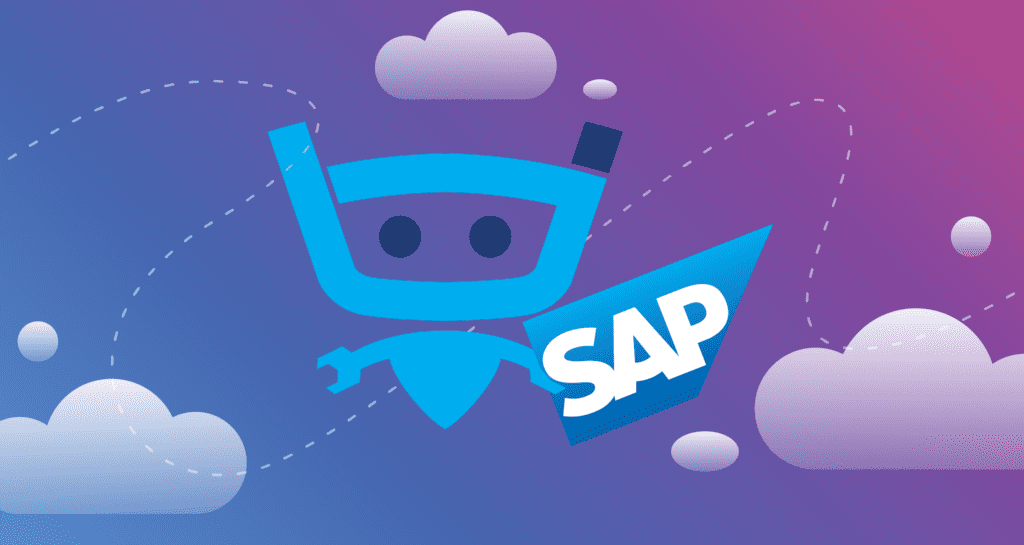
Invoice processing can be cumbersome for accounts payable teams on powerful yet complex ERPs such as SAP. AP teams spend a lot of time manually chasing approvers, tracking down information and supporting documentation, managing suppliers, fixing errors, and paying the bills on time. That’s time they don’t spend doing their main jobs – managing invoices and making sure they are verified, approved, and paid. As a result, workflows get bogged down, mistakes happen, and costs increase.
There’s a better way. Your business may already use a SAP ERP system such as SAP S/4HANA or ECC to automate and streamline processes and centralize business data. However, you may still use manual AP processes to process PO-backed or non-PO-backed expenses, approve and make payments, and sync AP data with your SAP modules. While complex ERPs like SAP segregate related functions into separate sections, this complicates manual navigation with reliance on shortcuts and complicated data entry.
Stampli streamlines accounts payable processes for SAP through invoice automation. It enhances document management, enables smoother communication, and provides an intuitive single-screen interface that enhances the user experience by removing shortcut dependency.
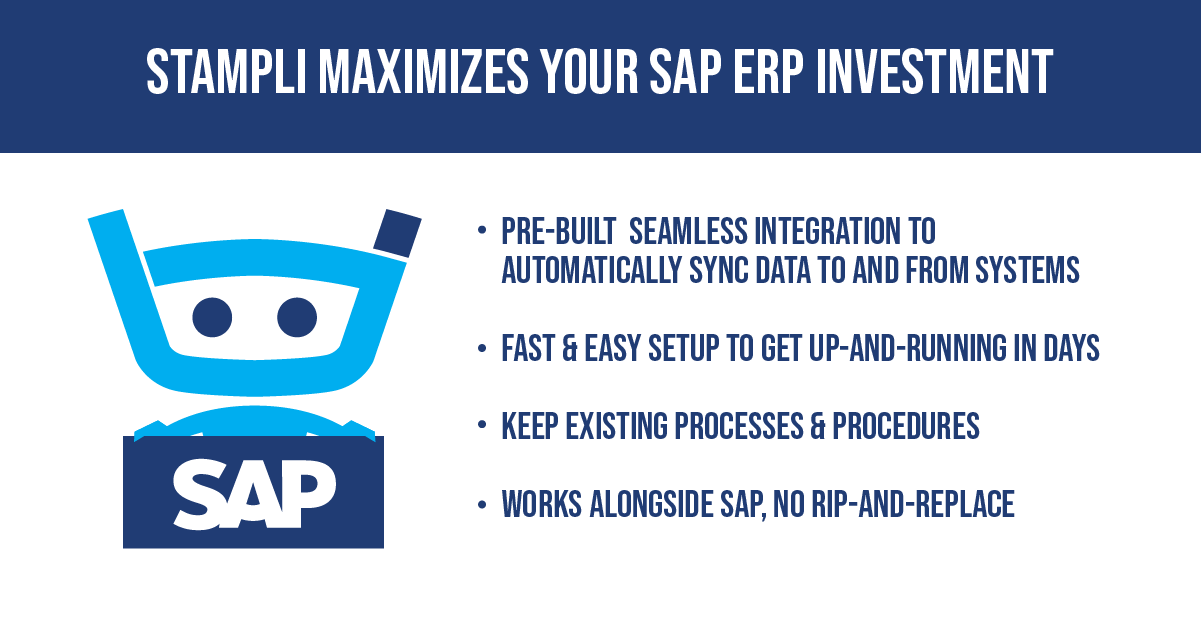
Keep reading to see how Stampli is the smart solution for CFOs who want to improve the efficiency of their invoice processing workflow and maximize their SAP ERP investment.
We’ll start by looking at the challenges of manual invoice processing.
Challenges of manual invoice processing with ERPs
Manual invoice processing encompasses traditional paper-based methods and digital systems if those systems are not specifically designed for invoice processing or lack automation features. In other words, if the digital system doesn’t facilitate easy and automated invoice processing, it’s still categorized as manual. This labor-intensive approach typically involves tasks such as:
- Receiving paper invoice documents
- Entering the invoice data into an ERP or accounting system
- Reviewing and GL coding the invoice details
- Matching the invoice against purchase orders and receipts to verify the data
- Routing paper documents for approval and payment
This process is time-consuming, inefficient, error-prone, and not scalable to handle higher invoice volumes, and it presents businesses with several challenges:
Complicated ERP workflows
Enterprises choose complex ERPs for their power and customizability to meet specific business needs. However, this can lead to complexity, particularly in how these ERPs handle invoices and expenses, distinguishing between those backed by purchase orders and those not. This distinction often results in a user experience that requires toggling between different screens and menus for processing.
Greater risk of fraud and errors
Manual paper handling and data entry processes expose businesses to potential fraud and errors, placing your business at risk. Tracking and correcting errors can mean sorting through physical files and scanning emails to find the root cause, which adds cost and complexity.
Limited scalability limits business growth
As your business grows, it spends more money on goods and services, which means more vendors, invoices, and line items that AP teams need to process. Manual processes don’t scale easily – adding employees adds costs and complexity and can result in AP departments getting bogged down.
Manual invoice management takes too long
Manually keying in and coding invoices takes a long time, especially when AP employees need to track down POs and receipts for two- or three-way matching. Some ERPs also require a dual-screen approach to matching invoices, which means AP employees must manage multiple documents and navigate sub-tabs to ensure accurate invoice verification. These tasks slow down the entire procurement-to-pay process, resulting in delayed payments and late fees (and frustrated vendors).
AP reporting is complex
Finance personnel frequently have to create tailored views within the ERP system specifically for the accounts payable team. This customization is necessary to enable AP staff to access, review, and interact with financial reports that are pivotal to their day-to-day operations and decision-making processes.
Inaccurate business data impairs good decision-making
With SAP, relying on manual processes and data uploads to your ERP prevents you from getting accurate and timely business data, which can impede your company’s ability to make informed decisions.
Stampli removes manual processes through its powerful and seamless integration with SAP. It improves invoice processing efficiency, facilitates real-time data sharing, and gives complete end-to-end visibility of accounts payable processes.
“The best aspect of Stampli is its seamless automation of the accounts payable process,” says a Stampli user on G2. “The intelligent invoice processing and approval workflows have significantly streamlined our operations, saving time and reducing manual errors.”
Stampli’s AP platform distinguishes itself through its extensive suite of pre-configured integrations, facilitating rapid deployment while maintaining the ERP’s inherent capabilities.
Let’s look at how it works.
Optimize invoice processing with Stampli and SAP integration
Stampli is the smartest, most flexible, and fastest invoice processing integration for SAP ERP. Its pre-built SAP integration maintains native functionality and automatically syncs data in real time. This keeps the systems aligned, including purchase orders, receiving details, vendor information, general ledgers, cost centers, item categories, custom fields, invoice specifics, payment data, and more.
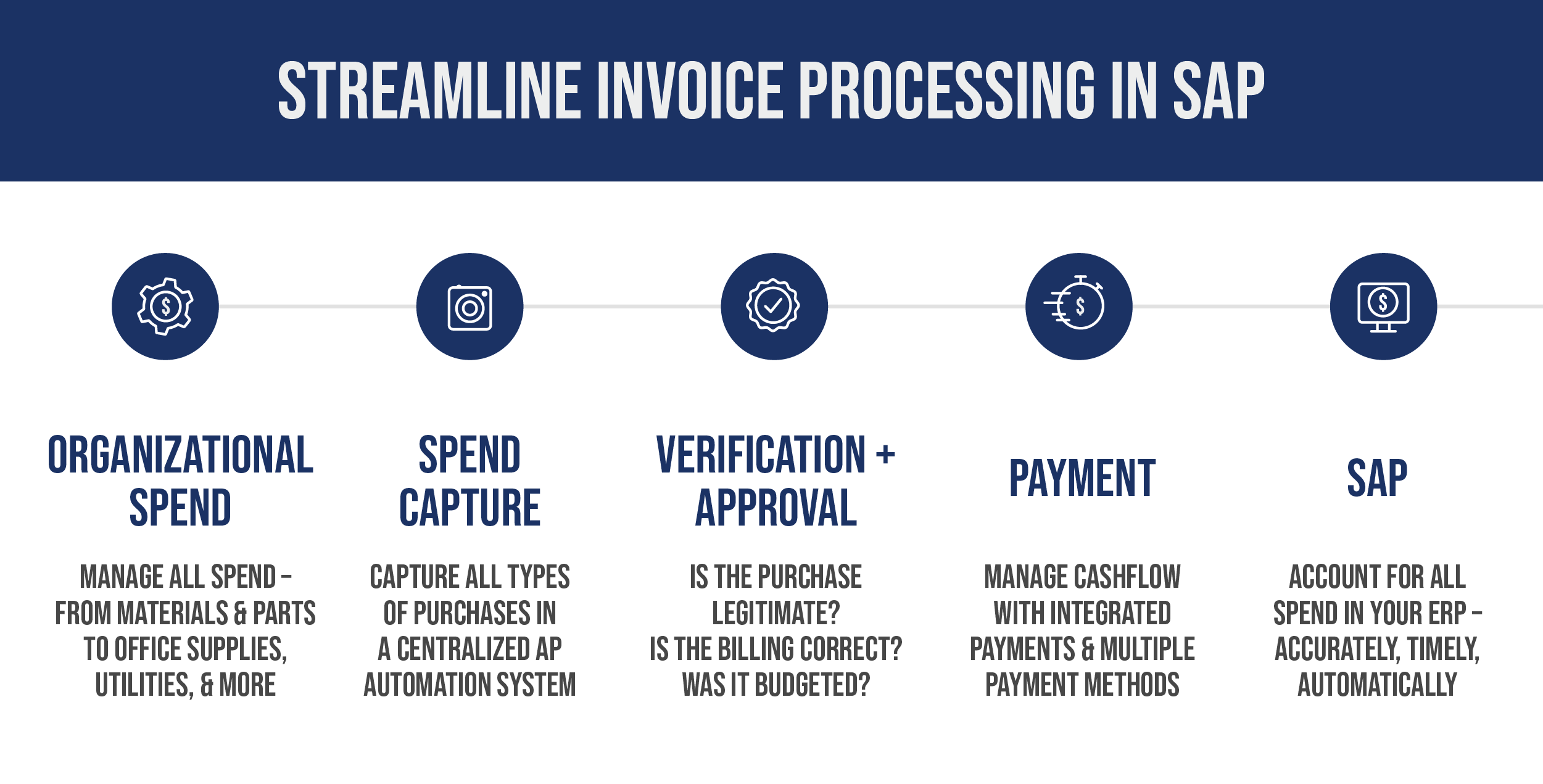
Stampli provides a single filterable view for all invoice, bill, and expense types. You can seamlessly share GL accounts, supplier information, departments, locations, and custom fields between Stampli and SAP, and automate key processes. When an invoice is entered and approved in Stampli, Stampli creates a vendor bill in SAP. Invoices paid via Stampli Direct Pay are automatically created in SAP and applied against the open vendor bill.
Stampli frees your AP department from overwhelming paperwork and inefficient communications so they can focus on higher-value tasks.
Here are a few ways Stampli/SAP optimizes accounts payable:
Fast and simple implementation
You can set up Stampli’s AP automation integration for SAP very quickly, with minimal need for IT work and no changes to your existing processes. Stampli provides end-to-end support during implementation and uses your existing protocols to ensure seamless integration between the two systems. “Stampli helped to create an efficient and effective way of electronically reviewing invoices in our organization,” reported one financial controller. “In addition, Stampli integration was efficiently completed within a day, and we were able to implement the new processes within less than a week.”
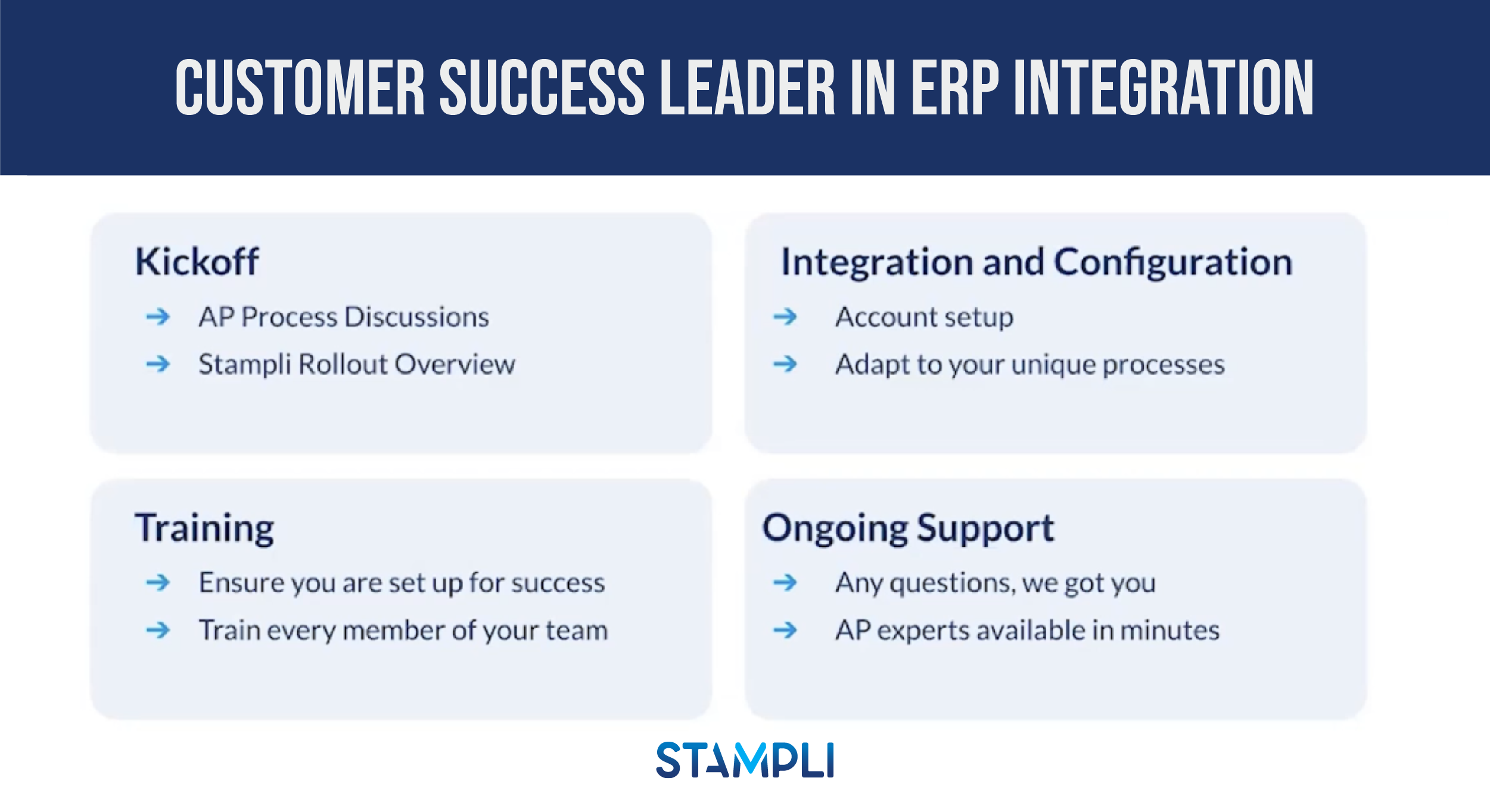
Dynamic workflows adapt to process changes
With complex ERP systems like SAP, you need IT support or outside consultants to update workflows when your business processes change. With Stampli, you can opt for fixed workflows or leverage the power of AI-powered dynamic workflows that use machine learning to automatically learn your processes and make adjustments when processes change — reducing your dependency on extensive workflow customization projects.
“Stampli is solving the simplicity of what other SAP systems have yet to figure out,” says one Stampli customer. “It is straight forward and it would be easy for anyone to pick up.”
Flexible invoice management capabilities
Stampli provides flexibility to manage scenarios such as single or multiple purchase orders and partial invoices, with customizable line-level detail and real-time status notifications. It can also manage multiple locations, currencies, companies, or subsidiaries, and GST and VAT tax calculations based on assigned tax codes. One customer commented on how Stampli’s flexibility helped them reduce paper and processing time: “As a multi-location company, our Management Team is spread out to several locations, which means sending paper invoices interoffice can essentially take days whereas, with Stampli, they receive an invoice instantaneously!”
Stampli is the “Best application to manage accounts payable,’ commented a customer who said they had switched to Stampli from BILL. Stampli supports multi-currency; this is also a positive point,”
With Stampli, you can set up and modify custom workflows, routing, and templates to meet your needs. For example, you can change the invoice approval process to include multiple approvers. Stampli also provides readily accessible reports with built-in analytics, eliminating the need to develop custom reports in your ERP.
Scalable for business growth
Manual AP processes are not easily scalable and can hold your business back when it’s growing. Stampli is scalable and customizable to handle increased invoice volume and complexity. AP Automation also supports business growth by boosting invoice processing efficiency and saving resources. “Stampli Software and Billy Bot are [like] adding a team member to our small accounting team,” commented a customer who said Stampli was “allowing us to be more productive, process more invoices, and assist more clients, all with the same internal team and new system in place.”
Optimized vendor relationships
Stampli’s Advanced Vendor Management functionality centralizes verified vendor data to optimize vendor relationships. It improves your company’s ability to onboard suppliers, collect and share vendor data such as contracts and insurance certificates, communicate with vendors, and pay invoices.
Clear centralized communications
SAP customers have made it clear that the SAP ERP is complex. For example, one reviewer mentioned the need to manage shortcodes and commented on customer support: “the level of complexity with sap codes when you are new to the software and trying to learn new features. there is little to no support in getting advice.” Others mentioned a steep learning curve, saying SAP S/4HANA “required highly skilled IT consultants” and that “Training is mandatory for the business end users.”
SAP ERP has a distinct organizational structure for menus and workflows and controls the level of access based on roles. This is because they are powerful business tools and can do a lot. While the menu and workflow structure make sense from a high-level category standpoint, SAP creates inefficiencies when it comes to invoice processing. Not to mention, SAP’s role-based permissions limit AP teams’ access to the people and information they need to process invoices. As a result, the SAP structure creates silos and blocks information flow.
Stampli’s AP automation platform, on the other hand, is built for AP and AP processes, and integrates seamlessly with SAP ERP. Stampli for SAP simplifies communications by centralizing all communications on top of the invoice itself. By putting all messages between stakeholders, approvers, and vendors in one place, Stampli centralizes communications and prevents missed messages, and, as a result, helps ensure accountability and context.
“Stampli provides a transparent and traceable audit trail, allowing us to monitor the status of invoices at every stage,” commented one user. “Disparate systems and manual data entry caused inconsistencies and inefficiencies in data management. Stampli’s integration capabilities with other systems help to create a more seamless and connected financial ecosystem.”
Data security and integrity
The data in your SAP ERP is the single source of truth for your payables. Stampli protects this data through a bi-directional data sync to maintain data integrity and security.
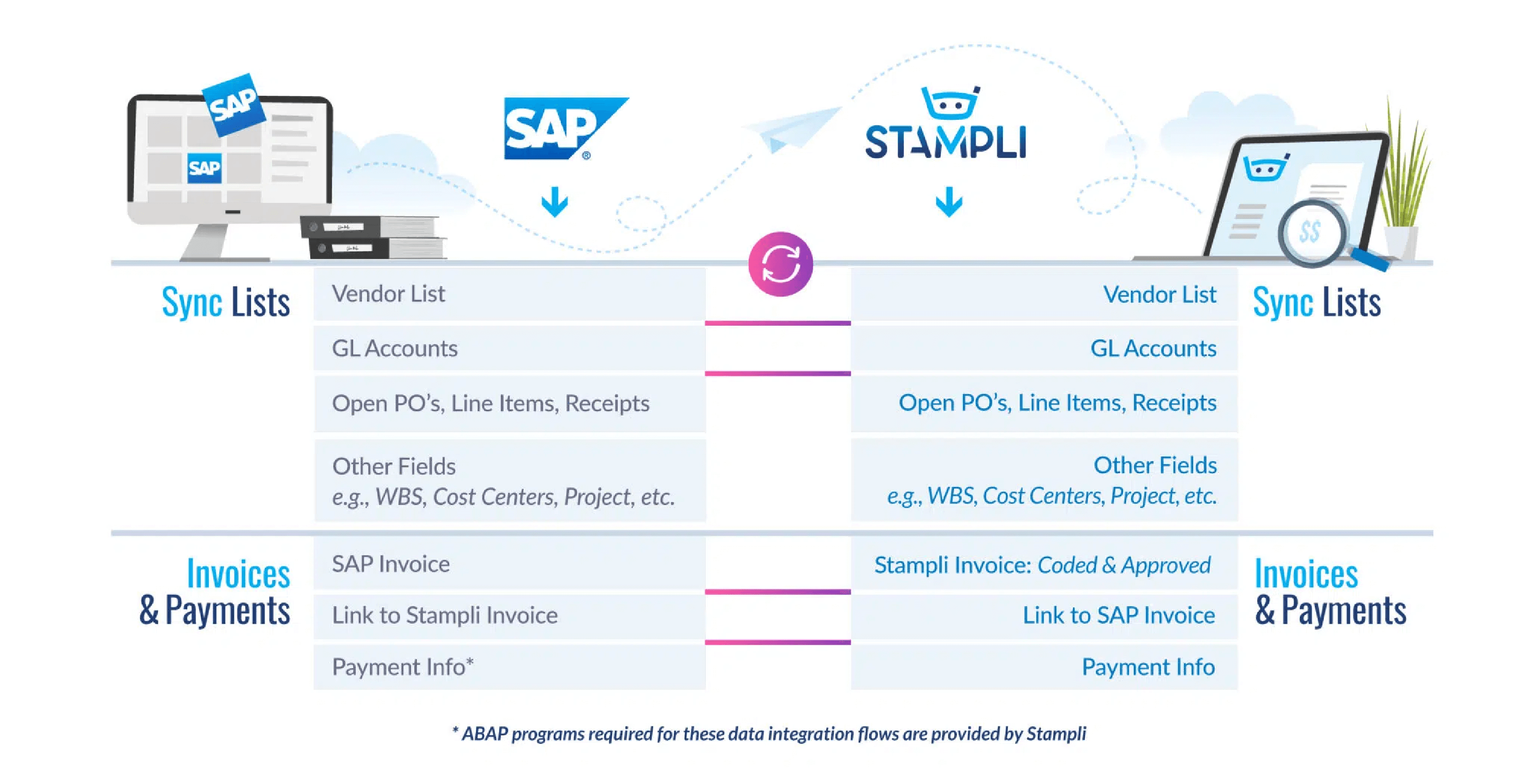
Integrated payments with Stampli Direct Pay
Stampli Direct Pay works alongside Stampli to automate B2B payments. Direct Pay auto-syncs bank account information, supplier details, vendor credits, discounts, and pricing between Stampli and your ERP to ensure payment information is consistent across the organization.
Want to know more about how Stampli integrates with SAP? Stampli’s experts will walk you through the details in Stampli Connects: Transform Your AP Processes with SAP & Stampli.
Stampli: The leader in invoice processing with SAP
Stampli “has been a massive win for us,” raves a happy Stampli customer reviewer on Capterra, citing how Stampli has revolutionized their AP processes: “from its seamless interface with our accounting software to its straightforward invoicing approval process. Its clear, user-friendly interface and exceptionally detailed layout make managing invoices a breeze. We now have more control over our budget and greater operational efficiency thanks to the system’s ability to display invoices awaiting approval, monitor overdue invoices, and provide instant access to all invoices that have been approved.”
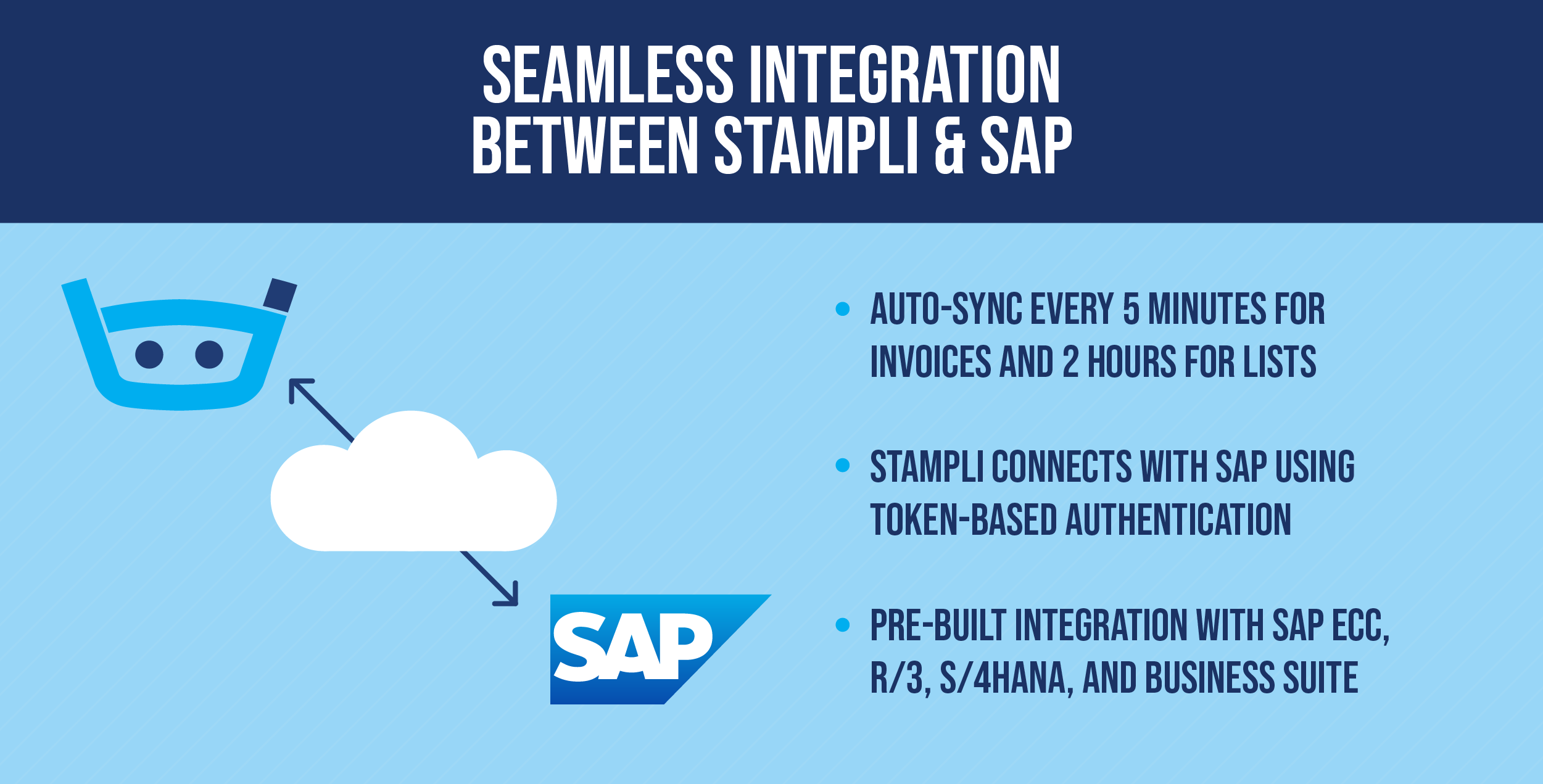
Stampli gives you the most control and visibility over your invoice management workflow. It consistently receives top customer satisfaction scores in industry reports such as G2 Grid® for AP Automation software and is recognized for excellence in implementation, customer relationships, and delivering results.
“Game changer,” said another reviewer. “For a ‘can’t deny it’ data point: in our 2nd week on Stampli, we processed more invoices than we ever had in a week, and had the lowest number of invoices pending approval since we’ve tracked that stat.”
To learn how Stampli can help you get the most out of SAP solutions, get in touch with our team to set up a demo.
